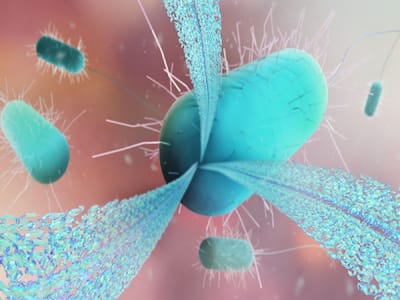
Antibiotics resistance is a phenomenon that occurs when bacteria evolve and develop resistance to antibiotics that are a actually designed to combat them.
Antibiotics are one of the greatest discoveries of 20th century in the medical sector and it serves a huge role in treating patients with any kind of disease, they fight bacterial infections and stop them from further reproducing and spreading. But what if these bacteria develop resistance to these antibiotics?
Sounds intimidating right? But the global researchers have unveiled the increasing threat of antibiotic resistance and it has become a critical global concern that needs urgent attention.
So, what exactly is antibiotic resistance?
Antibiotics resistance is a phenomenon that occurs when bacteria evolve and develop resistance to antibiotics that are a actually designed to combat them. And due to this, the common infections those were easily treated earlier are becoming impossible to manage.
Antibiotics resistance is affecting people and the world in different ways let’s look at some points!
Emergence Of Superbugs
Superbugs is a term used for germs that have shown resistance to antimicrobial agents. As of now, humans have not developed any treatment for the infection caused by superbugs. The overuse and misuse of antibiotics have accelerated the development of antibiotic-resistant bacteria superbugs. These bacteria can spread easily and cause severe infections that are challenging to treat.
Huge Impact On Healthcare
Antibiotics resistance places burden on healthcare systems. Due to the lack of the availability of the treatment it becomes difficult to treat antibiotics resistant infections. Furthermore, treating antibiotic-resistant infections requires longer hospital stays, more expensive treatments, and often leads to poorer health outcomes.
Availability of Limited Treatment Options
With the increasing antibiotic resistance, the number of effective antibiotics is diminishing. The lack of new antibiotics entering the market means that we are running out of treatment options for certain infections.
Cross-Border Challenge
The problem is that these resistant bacteria spread so fast and it knows no borders. Resistant bacteria can travel across countries and continents, making it a global problem that requires international collaboration.
Agricultural Practices
Farmers have begun to use antibiotics in agriculture so much that it has given birth to so many anti resistant bacteria. It is particularly used in livestock production, contributes to the development of antibiotic-resistant bacteria. These bacteria can spread to humans through food consumption and contact with animals.
READ RELATED: 4 Alarming Indicators Of High Cholesterol In Your Eyes
This emerging global threat should be given more attention and the aim should to completely annihilate the problem. And this can happen when efforts are put internationally. The development of new antibiotics is essential to combat antibiotic resistance. However, the pipeline for new antibiotics is limited, and innovative approaches are needed to incentivize research in this field.
There are certain things that can be done:
Awareness Should Be Created Amongst People!
Raising awareness among patients, healthcare providers, and the public about the importance of responsible antibiotic use is crucial. This includes understanding that antibiotics are ineffective against viral infections like the common cold. A more enlightened audience will be able to understand the situation better.
One Health Approach Should Be Opted!
Recognizing that human health, animal health, and the environment are interconnected, the One Health approach advocates for collaborative efforts across sectors to address antibiotic resistance comprehensively.
Global Action Is Needed!
International organizations, governments, healthcare providers, researchers, and the pharmaceutical industry must work together to implement strategies that preserve the effectiveness of antibiotics and safeguard public health.
Conclusion
This article highlights the global threat of antibiotics resistance. It should be noted that if not much is done to prevent the disease caused by the antibiotic-resistance bacteria then situation will become more wicked. Antibiotic-resistant infections are even associated with higher mortality rates, as treatment options become limited and infections become more difficult to manage. Without effective antibiotics, the medical advancements could become perilous.
Total Wellness is now just a click away.
Follow us on
Don’t Miss Out on the Latest Updates.
Subscribe to Our Newsletter Today!
window.addEventListener(‘load’, (event) => {
$(‘#commentbtn’).on(“click”,function(){
(function(d, s, id) { var js, fjs = d.getElementsByTagName(s)[0]; if (d.getElementById(id)) return; js = d.createElement(s); js.id = id; js.src = “//connect.facebook.net/en_US/sdk.js#xfbml=1&version=v2.3”; fjs.parentNode.insertBefore(js, fjs);}(document, ‘script’, ‘facebook-jssdk’));
$(“.cmntbox”).toggle();
});
});






